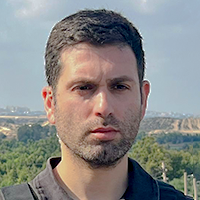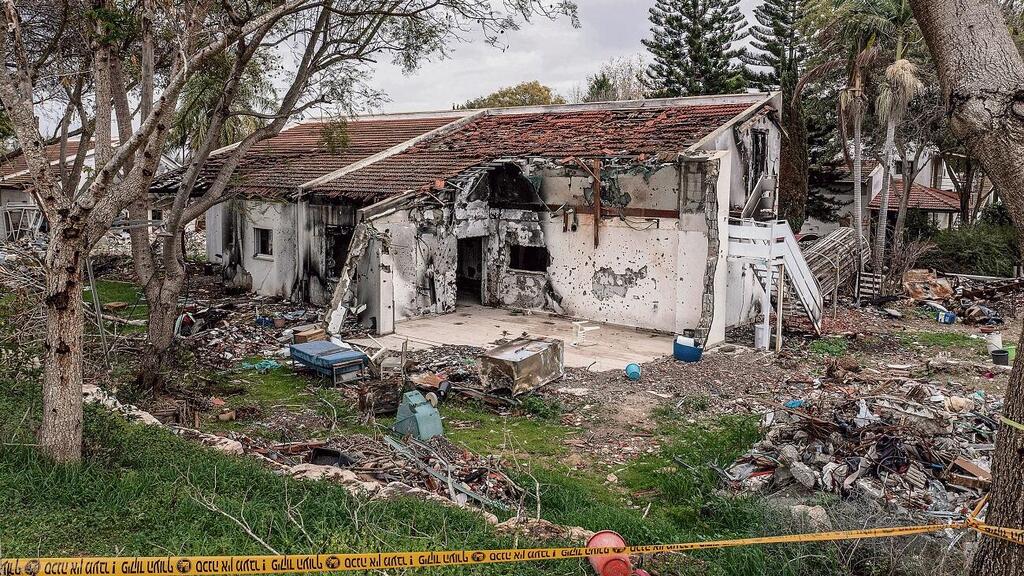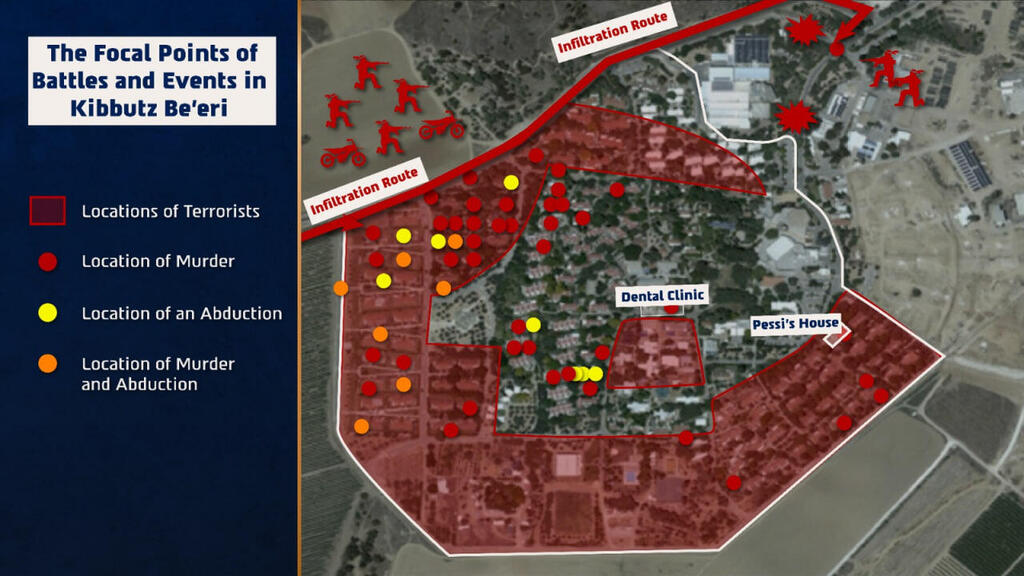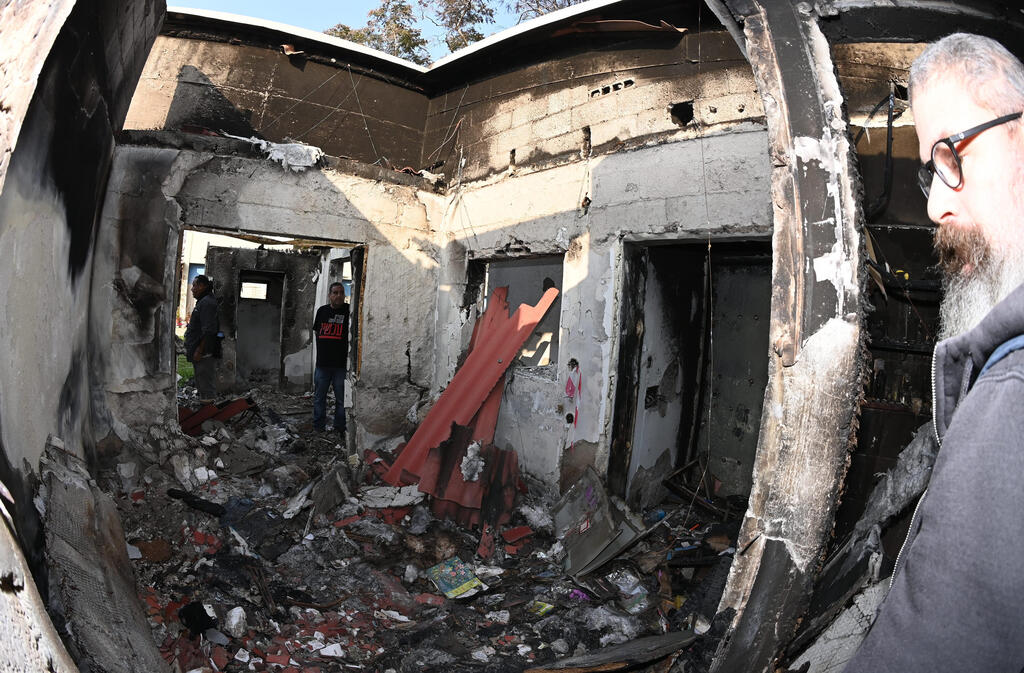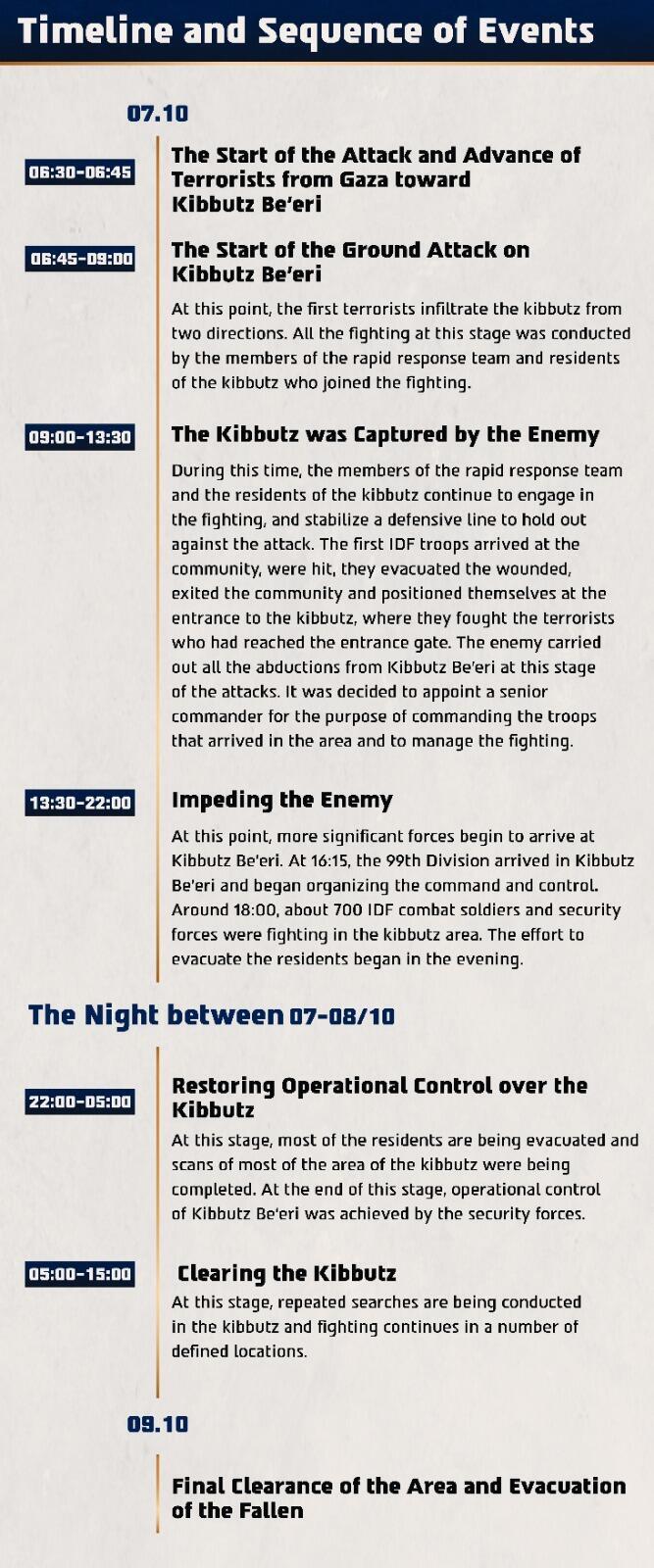Getting your Trinity Audio player ready...
A moral fault in the face of courage, serious professional errors alongside striving for contact and heroic battles: the investigation into the October 7 battles at Kibbutz Be'eri was presented Thursday to the bereaved families and members of the kibbutz community, who suffered one of the heaviest blows on the day of the Hamas invasion of the Western Negev on October 7. The investigation used difficult terms that had not been used by the IDF since the Yom Kippur War
"The IDF did not fulfill its mission to defend the residents in the most grave manner and failed in its mission," the Israel Defense Forces said on Thursday in presenting the results of the operational inquiry into the October 7 battles at Kibbutz Be'eri.
The findings were presented to the members of the Be'eri community, the families of the hostages abducted from Kibbutz Be'eri, and the bereaved families on Thursday before being released to the public Thursday evening. The inquiry was summarized by the Chief of the General Staff Herzi Halevi and was subsequently presented to Defense Minister Yoav Gallant.
Be'eri was attacked by the Nuseirat battalion of Hamas, located roughly parallel to the west of the kibbutz when the first 25 terrorists from the Nukhba's spearhead force invaded it at 6:42 a.m. Some 340 terrorists were in the kibbutz at the height of its occupation, between noon and 1 p.m., including 120 of the Hamas Nukhba force, about 70 Hamas operatives, about 150 Islamic Jihad operatives, looters of all kinds, and other terrorist factions. Only 18 of the terrorists were captured alive and interrogated. Hamas terrorists who came from the Re'im festival wanted to invade Netivot, but due to clashes there they retreated, and instead of fleeing back to Gaza, they also entered Be'eri.
Data shows that on the morning of October 7, there were 1,071 people in Kibbutz Be'eri, many of whom came as guests on the occasion of Simchat Torah. In the attack on the kibbutz, 101 civilians were killed, and 30 hostages from Kibbutz Be’eri and two additional hostages were abducted and taken into Gaza, 11 of whom are still being held in Gaza. During the battle, 31 security personnel fell, including 23 IDF soldiers and members of the civilian rapid response team, and eight officers of the Israel Police. Many soldiers and civilians were also injured.
The inquiry team determined that the IDF failed in its mission to protect the residents of Kibbutz Be'eri; the bravery of the Be'eri residents and the members of the kibbutz's civilian rapid response team is commendable and was crucial in stabilizing the defensive line during the first hours of combat, preventing the attack from spreading to other parts of the kibbutz, according to the IDF.
"The security forces who fought in the area operated with great bravery and heroism," according to the IDF.
The houses in the kibbutz sustained heavy damage, and the recovery process for the kibbutz is expected to take a long time.
The inquiry was conducted by Maj. Gen. (res.) Mickey Edelstein and members of the inquiry team, including Colonel (res.) Yossi Turgeman, Lieutenant Colonel (res.) Dr. Oded Megiddo, Major (res.) Dror Engelstein, Captain (res.) Shir Dani, and Dr. Anat Stern.
The members of the team were not part of the chain of command and were not involved in the events themselves.
The inquiry, which lasted around three months, included hundreds of hours of conversations and interviews with the residents of Kibbutz Be'eri, members of the civilian rapid response teams, and security forces that operated in the area during the initial days of the war. Thousands of data points and materials were collected to create as clear and accurate a picture of the events as possible. As part of this, the team members gathered recordings of all communications of the security forces, examined communications among kibbutz members (with their consent), and collected supplementary intelligence and interrogation materials from terrorists captured at the beginning of the war. Additionally, the team compiled video footage, observation records, and field reconstructions. The inquiry was conducted in collaboration with the Israel Security Agency and the Israel Police, whose forces operated in the kibbutz as well.
The inquiry is an operational military inquiry that focuses on the sequence of events, combat management, and the conduct of the security forces. It examined the battle in Kibbutz Be'eri, which was one of dozens of combat focal points during the surprise attack on October 7. The infiltration of thousands of terrorists through multiple locations simultaneously was the main factor that hindered the security forces' arrival at the combat zones. This issue, which appears in several inquiries, is at the center of the overall inquiry regarding force deployment and will be presented later.
For the inquiry, the team divided Kibbutz Be'eri into four areas of inquiry. In each area, the mapping and construction of a dedicated timeline was carried out from the beginning of the Hamas attack on October 7th until operational control was regained and the area was cleared of terrorists. In each area, the forces' arrangements at each stage during the days of combat, the conduct of the forces, and additional key events are described.
The inquiry into the battles at Kibbutz Be'eri found that the IDF was not prepared for the extensive infiltration scenario that occurred on October 7th, involving multiple infiltration points by thousands of terrorists attacking dozens of locations simultaneously. " The issue of preparedness and training is still being examined as part of a comprehensive inquiry into the defense and intelligence concepts," according to the report.
5 View gallery
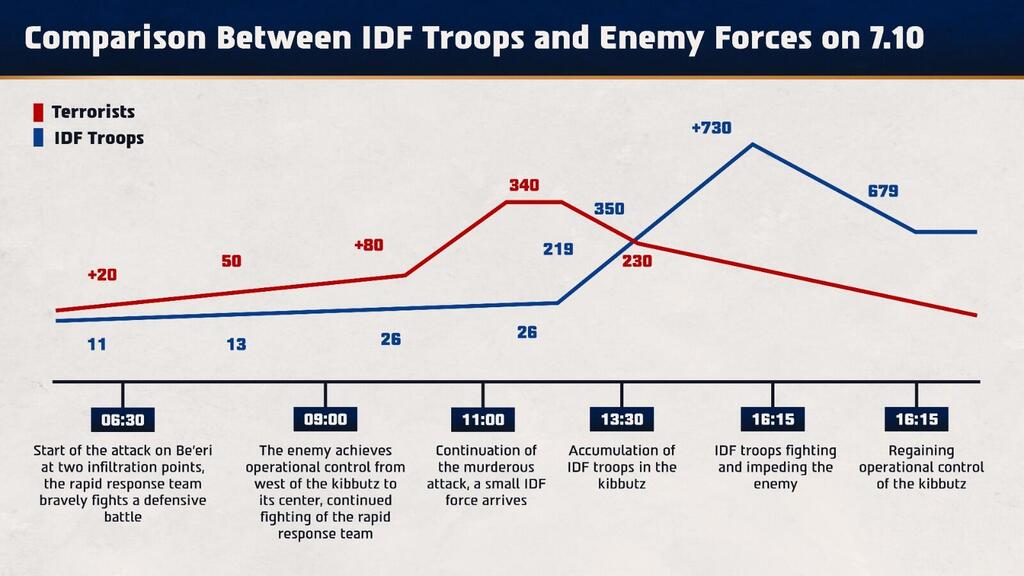

The number of IDF troops versus the number of enemy forces during the fighting in Kibbutz Be’eri
The IDF "struggled to create a clear and accurate situational assessment of what was happening in the kibbutz until the afternoon of October 7, even though the local community emergency team had made an updated situational assessment of the events in the kibbutz in the morning," according to the report.
In addition, the inquiry found that the security officials did not provide sufficient warning to the residents of Kibbutz Be'eri about the infiltration of terrorists during the initial hours of the terrorist attack.
The inquiry also looked at the actions of the kibbutz members during the hours that they were defending themselves. "For the first seven hours of combat, the kibbutz residents defended themselves; their actions and resourcefulness prevented the enemy from expanding the attack to additional neighborhoods. The residents continued to fight even after the arrival of IDF soldiers, guiding them and fighting alongside them," according to the report.
The inquiry also looked at the breakdown in command and control during the incident. "Due to the multiple focal points and difficulty in forming a situational assessment, the combat in the area during the initial hours was characterized by a lack of command and control, a lack of coordination, and a lack of order among the different forces and units. This led to several incidents where security forces grouped at the entrance to the kibbutz without immediately engaging in combat," according to the report.
Still, according to the report, " the combat in Be'eri included a series of acts of heroism and supreme courage by the fighting forces, commanders, and security personnel who fought in the kibbutz, saving many residents."
The IDF also noted that there were "instances where IDF soldiers acted inappropriately in their conduct toward civilians, particularly in the security provided to the residents that were evacuated, and in the addressing of basic needs by the security forces."
The inquiry also dealt with the hostage incident at the home of kibbutz member Pessi Cohen, where terrorists barricaded themselves with 13 kibbutz residents and relatives, who made about 30 calls from the house to police headquarters to tell them about the situation.
The terrorists barricaded themselves and also fired from the houses adjacent to Pessi's house. At about 4 p.m., the situation in the home began to be run as a full-on hostage event including encirclement of the house and a dialogue on the phone between "Hassan," one of the kidnappers in the house, and a representative of the Joint Chiefs of Staff's negotiation team.
Hassan demanded to leave with the hostages to Gaza unharmed, but the other terrorists did not accede to Hassan's request and continued to shoot.
Dr. Shoshan Haran from Be'eri
After gunfire was heard from within the house and the terrorists communicated their intent to commit suicide using explosives they had with them and kill the hostages, the security forces decided to breach the house to attempt to save the hostages, and conducted combat operations under difficult conditions, including firing tanks shells at the house.
The inquiry team noted that the hostages held in the house demonstrated great resourcefulness, making significant efforts to contact and guide the security forces. The inquiry team presented their findings on the circumstances of each civilian's death to the bereaved families. The team determined that, based on the information reviewed and to the best of their understanding, no civilians inside the building were harmed by tank shell fire, except for an isolated incident outside the building where two civilians were injured by shrapnel. The team determined that most of the hostages were likely murdered by the terrorists, and further inquiries and reviews of additional findings are necessary. Regarding the performance of the senior commanders at the scene, the inquiry team found that they acted in coordination and with professionalism in the face of a difficult and complex situation.
According to the IDF, the Chief of the General Staff "accepted all the conclusions and insights from the inquiry, and determined that these takeaways should be integrated into defensive and operational plans."
Among the main conclusions of the inquiry are:
"The IDF did not fulfill its mission to defend the residents in the most grave manner and failed in its mission";
"The fighting of the residents of Kibbutz Be'eri, led by the members of the civilian rapid response team, was conducted with determination and courage. Their bravery, defending the kibbutz and its residents with their bodies, should be highly commended. This combat prevented the total capture of the kibbutz and saved many lives. Alongside them, the Chief of General Staff commended the actions of the members of the local community emergency team for providing an updated situational assessment and maintaining contact with residents of the kibbutz while under fire."
"Many members of the security forces fought bravely in Kibbutz Be'eri and performed acts of heroism. However, severe mistakes and errors were made, and we must learn, strengthen, and make corrections for the future."
The inquiry into the battles in Kibbutz Be'eri is the first part of a comprehensive internal inquiry process currently being conducted by the IDF, examining the events of October 7th and what led up to these events, according to the report. "At the end of the inquiry process, that will allow the formation of a complete picture of the series of events, decisions will be made and implications will be drawn, in addition to the operational conclusions that will be implemented in the immediate time frame," the report said.
The report concluded that the IDF "bear(s) the responsibility and duty to conduct a thorough and deep inquiry process to learn, strengthen, and improve the defense that the civilians of Israel deserve. This is in-depth learning so that profound changes will be made to strengthen the IDF in its mission to protect the civilians of the State of Israel.
"This is our duty to the Israeli public in general and to the residents of the south in particular."
Timeline of the attack on Kibbutz Be'eri:
06:50 - Movement of terrorists on motorcycles is detected in the kibbutz and reported to the security forces
07:00 - The first Nukhba squad enters the kibbutz and murders Sheriff Eric Kraunik who was on his way to the armory
07:45 - Dozens of terrorists begin a murder and kidnapping spree throughout the kibbutz
08:30 - The General Staff standby team of 13 Shaldag fighters leaves for Be'eri and joins General Yossi Bacher
09:00 - more fighters are injured and the ammunition is running out: the commander of the Shaldag force decides to retreat and asks for reinforcements. Additional teams from Shaldag encounter dozens of terrorists on the Gaza border community roads on their way to the kibbutz. Dozens of terrorists arrive from the Nova festival area
11:00 - By decision of the General Staff, Brigadier General Barak Hiram accepts sectorial responsibility. The terrorists begin to gather hostages in houses
11:20 - Dozens of looters break through the kibbutz fence
11:50 - A helicopter with paratroopers lands in Kibbutz Alumim
12:00 - Military patrol soldiers arrive at the kibbutz and fight with the paratroopers
12:15 - Another Nukhba force breaks into the kibbutz
13:00 - Reinforcements from Paratroopers and Shaldag enter the kibbutz and conduct battles with the terrorists. Some 32 out of 33 abductees have been taken to Gaza by this time
14:30 - The battle for the dental clinic ends with the death of 3 civilians and a member of the emergency squad
15:20 - Another force of Shaldag under the command of the late Yitzhar Hoffman arrives at the kibbutz with 25 soldiers
15:45 - First contact of the forces with the terrorists who barricaded themselves in the house of the late Pessi Cohen with 13 hostages. During these hours about 200 terrorists are in the kibbutz
17:00 - Tanks arrive to fight in Be'eri, including the late Lieutenant Colonel Salman Habka
18:00 - Four tank shells are fired into the vicinity of Pessi Cohen's house



